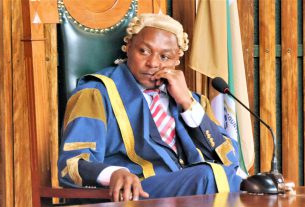Article 176 (Chapter Eleven) of the Constitution establishes County Governments consisting of a County Assembly and a County Executive. The Chapter further sets out the roles, functions and other matters relating to the membership and operations of the County Assembly. Section 8 of the County Governments Act provides that the County Assembly shall vet and approve nominees for appointment to county public offices, perform the roles set out under Article 185 of the Constitution, approve the budget and expenditure of the county government in accordance with Article 207 of the Constitution, and the legislation contemplated in Article 220 (2) of the Constitution, guided by Articles 201 and 203 of the Constitution, approve the borrowing by the county government in accordance with Article 212 of the Constitution, approve county development planning and perform any other role as may be set out under the Constitution or legislation. Article 185 of the Constitution provides for the legislative authority of county assemblies, vesting the legislative authority of a county and the exercise of that authority in its county assembly. The Assembly has powers to make any laws that are necessary for, or incidental to, the effective performance of the functions and exercise of the powers of the county government under the Fourth Schedule. It also provides that a county assembly, while respecting the principle of the separation of powers, may exercise oversight over the county executive committee and any other county executive organs. The Assembly also receives and approves plans and policies for the management and exploitation of the County’s resources and the development and management of its infrastructure and institutions. County Assemblies are expected to conduct an oversight of the County Government, which has been expanded greatly, with extended control over critical County processes such as the Budgeting process, public appointment and County Legislation among others. Embu County Assembly consists of 34 Members, who include 20 Ward Representatives, each elected by the registered voters of the wards, each ward constituting a single member constituency. Ten (10) members are nominated by the County Assembly political parties according to their proportional representation in the County Assembly to represent special interests including persons with disabilities, minorities and the youth, and the Hon. Speaker elected from outside the House.
Tuesday, January 06, 2026
County Assembly of Embu


